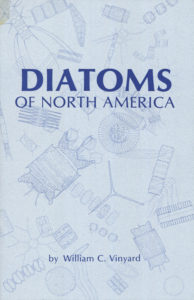Red Tides Off Vancouver Island
Red Tides
A couple of days ago (June 2018) I was startled by the bright red colour of the seawater at Mill Bay BC. These blooms of dinoflagelates (a type of plankton) are population explosions that occur in spring and summer. Some dinoflagellates become so numerous that the water becomes a rusty-red. There is a red oil drop containing pigment in each organism that reflects to make the red colour. The small red spots in the organism, when added to a population bloom countless numbers of similar organisms give seawater the characteristic colour that makes up a red tide.
A dinoflagellate is a single celled organism and most species live free in sea water. Most have two whip-like flagella – one to drive the organism forward and the other to make it rotate. This allows the organism to adjust its orientation and vertical position to make the best use of light for photosynthesis.
Protoperidium sp.
This organism feeds on bacteria, diatoms and other dinoflagellates. When organism is caught it exudes some of its cytoplasm to engulf the prey. They prey is then digested externally before being retracted back into the body.
I took these images through my microscope with a digital camera. This dinoflagellate is a Protoperidinium sp. Dinoflagellates cannot produce their own food but are predators who catch and eat other small organisms. They in turn are prey for copepods and bottom dwelling suspension feeders such as hydroids.
In Saanich Inlet a localized bloom became very evident when persistent wind appeared to concentrate water on the lee shore. The water looked very rusty red but at times the sun made it almost glow bright red.
These blooms (Harmful Algal Blooms) can become dangerous because the physiology of other organisms can be affected. The organisms produce a potent neurotoxins as part of their metabolism. Filter feeder organisms (such as clams, mussels, oysters) can concentrate these toxins. If humans eat these organisms they can become very ill, or even die from paralytic shellfish poisoning.
Beach goers can be affected even if they do not eat affected organisms. There have been cases where blowing wind picked up dried organisms with the toxins and persons who breathed them in or ingested them were affected with inflamed eyes and asthmatic-like symptoms.





































